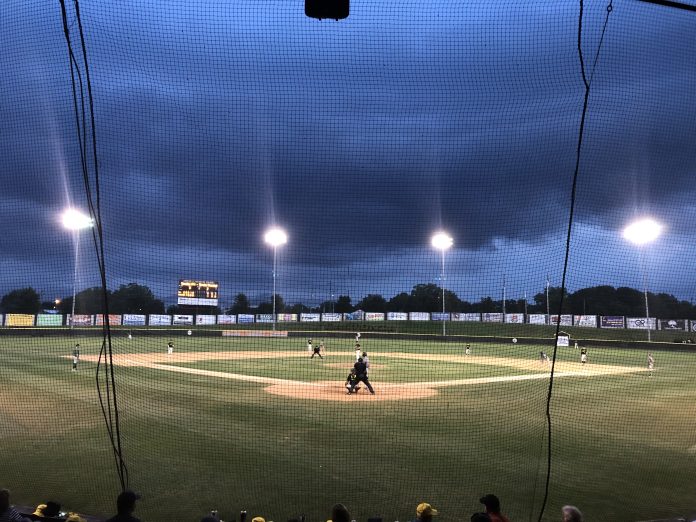WORDS BY BEN DUNGAN
It’s the top of the 5th inning and the score is 3-2 in favor of the home team. The
beer is flowing, the peanuts are cracking, and the crowd is hanging on every pitch. But then you notice, just off in the distance, dark clouds starting to form.
The game that doesn’t believe in a time clock is now on the clock when it comes to Mother
Nature. Are the clouds headed this way, or are they going to just pass by, and
spare the game?
As is the case with most baseball leagues, a game is considered to be an official regulation game if 4½ innings have been completed and the home team is leading, or if five full innings have been played.
If it rains before this point, the game is postponed, only to be completed at another time. If it rains anytime after this point, it’s considered a finished game and the score is final.
The stakes are high at this point. Every pitch matters. In between the batters, everyone turns to their phones so they can check the radar to determine which direction the storm is moving.
These days, everyone has at least one weather app on their phone. In these moments, we are all meteorologists. Knowledge is power, and we have it in the palm of our hand.
But it wasn’t always like that.
There was a time when weather information could only be accessed through the local news outlets. The newspaper usually would print the forecast each day, but it was the local TV
news channels where you’d get updates throughout the day.
Mike McKay was the first weatherman I remember. He was on WBTV in Charlotte, the CBS affiliate in town. Growing up, WBTV was our channel – our trusted source – when it came to all things local news. That made McKay our weatherman.
Then came The Weather Channel. It launched in 1982, but we didn’t get it until 1986. That’s when my parents took the giant leap into cable television. We only signed up for the small package consisting of about two dozen channels, but thank goodness, the Weather Channel was a part of the lineup.
We already knew how great the Weather Channel was, since my grandparents in Virginia signed up for cable TV before we did. And when I say they had cable TV, I mean they had all the channels. Including MTV, Nickelodeon and the USA Network. Those were the best ones, if you were ten years old.
The Weather Channel was a game changer. No longer did you have to wait for the local news to come on to find out what was in store for your area. You just had to wait for the small hand to hit the 8’s. It didn’t matter what the big hand did.
This segment was aptly titled: “Local on the 8’s”. Over the course of the next few minutes you’d get the current conditions, a detailed forecast for the next couple of days and then the biggie – the seven day outlook! All of this was brought to you by a soundtrack of Kenny G and all of his smooth jazz friends.
Bad weather information didn’t seem so bad when they were delivered by the soothing sounds of Kenny G’s saxophone.
The Weather Channel changed how we consumed weather in the 1980’s. However, today it’s no longer just a channel – it’s a brand. More importantly, it’s an app on my phone – a pretty extensive one at that. It allows me to access everything I need to know in a
moment – temperature, radar, dew point, sunrise and sunset times, and much more. I can even track pollen counts in the spring.
As a result, my viewing habits have changed. I don’t have a local news channel I call my own anymore. My sources come from a range of news outlets – and rarely does it involve watching it on my TV.
Today, I don’t need a “Mike McKay” on a daily basis in the ways I used to. But we
still need them, especially when severe weather breaks out and is headed our way, whether it be a hurricane or snow storm. It’s still comforting to have a knowledgeable and trusted voice to guide you through the uncertainty.
Bob Dylan was right then and he’s still right today. We don’t need a weatherman to know which way the wind blows anymore. There’s an app for that.

